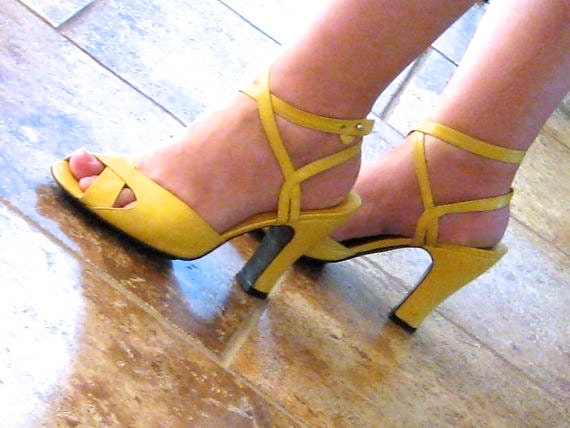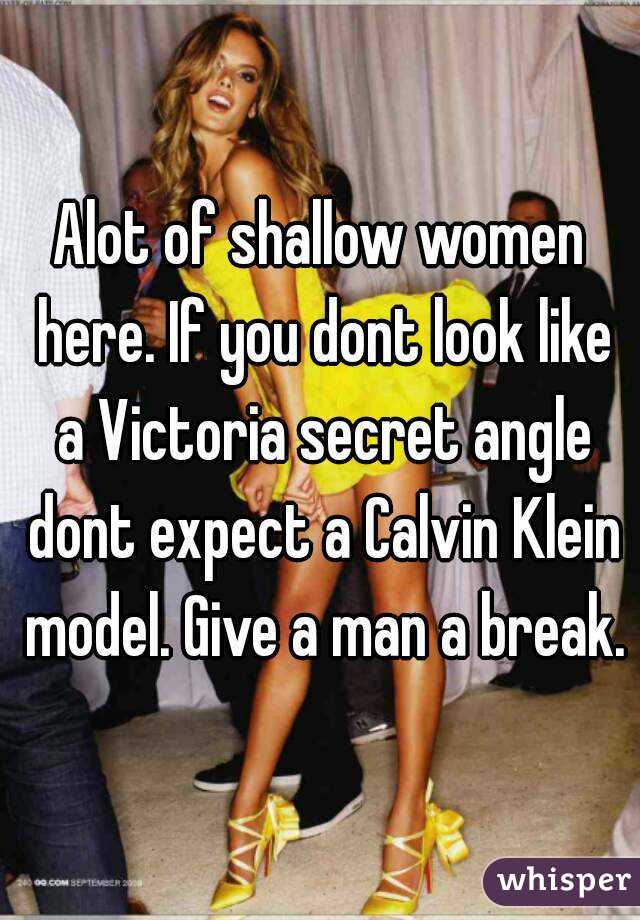Good ol' Barb's character is portrayed as very sensual as in the first shots of her she is in only a towel. Additionally she is seen fixing her hair and makeup propagating the stereotype that women care significantly {and primarily} on their looks. Another situation to consider is the initial conversation between Stanwyck and MacMurray's characters. In this scene Stanwwyck is sitting or should I say "sexy" slouching {if that is a thing}. A notable part of this scene is that Stanwyck's ankle is highlighted. While nowadays it takes a lot to be consider scandalous apparently in those days all it took was a glance downward to the ankles. {Apparently, the 1940s to ankles is the 2010s to shoulders}. Finally it should be noted that there is a focus especially with the camera angles on her legs and their {magical} existence below the hemline of her dress.
Stanwyck's character is shot in many close and tight angles. Her outfit, face, hair, and legs {as previously mentioned} are highlighted. It is well known that is film was low budget which is reasoning for many of the tight shots but the producers and directors still chose to have these shots of not just Stanwyck's face and mouth {when it was moving}. The lighting that surrounds her is very stark. Her face {or legs} are very bright and the background is dark. She is portrayed not only through movements and camera angles but also through her verbal actions as sultry and troublesome. Throughout the film Stanwyck and MacMurray's characters banter. While on first glance showing Stanwyck's character talking might seem like a win for 1940s feminists it actually is not because she is shown as heartless. Phyllis appears to have no morals as she is proponent of adultery, murder, and well she is plain greedy and manipulative. Additionally all the men in her life end up in major trouble {dead, collapsed} as she does herself.
Although sometimes the curtain is blue just for the sake of being blue {see image below - apology for the curse word} it is interesting that Walter is the one who is able to overcome emotion and kill his S.O. This shows a transition in Phyllis from heartless to a emotional position where {as the kids say it} she is hit in the feels. Is should be noted that Phyllis does previously admit to Walter that she never loved him and in the words of Shakespeare "The lady doth protest too much". So maybe all her talk was simply that, talk, and she really did love Walter. Stanwyck's character's portrayal in the film is very indicative of the social situation of women in the 1940s. In the 1940s World War II was in full swing for the first half of the century. While this meant that women got more jobs out in the workforce and some even went to war there was still a movement of conservatism. The majority opinion was though in favor of working women since the economy depended on it. Women were encouraged to be masculine and help their countries by getting a job outside the home so it is no coincidence that Phyllis' scheming and power {money} hungry mind was showcased. This high level thinking was indicative of a man but a woman was having these thoughts instead {who would have though it}. You can definitely argue that Double Indemnity is more chauvinistic with the required help of a man and Phyllis' reliance on men but I believe {hope} that it was slightly feministic in nature.
{A review of my discussion in photos}
| While Double Indemnity isn't a family film. I certainly saw more of Stanwyck's bare skin than MacMurrays. |
 |
| Woah! Look at those shoes highlighting her ankles {scandy}. |
| Hmmm. 1940s : ankles = 2010s : shoulders. |
 |
| This is "why" women should care about their aesthetic {like Stanwyck's character}. NOTE THE DRUNK MISSPELLING OF ANGEL! |
| In Double Indemnity it appears as if Phyllis heartlessness makes her more appealing to Walter. {Preach T-Swizzle} |
 |
| Because women are creatures guided by only harsh and cruel emotions. |



I enjoyed this post!!! You made it humorous and fun to read. I agree that Barbara's character was overly sexualized in the movie and the murdering and scheming was made to look glamorous and cunning to add to the appeal of her character. Even though women's roles were kinda flipping and flopping all over the place, I think Phyllis embodied both ends of the spectrum. She was very feminine and acted like she loved Walter and her husband in order to achieve her means, and was seen as subordinate and such towards all the men in the office. But in reality she was deceitful and strong-willed, getting Walter to do the dirty work. It's also very interesting because Walter is the one telling the story so how do we know she was really like that or if he just imagined her that way???
ReplyDelete